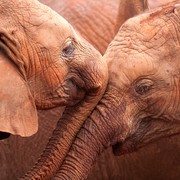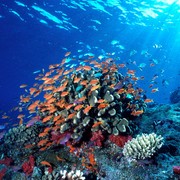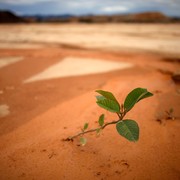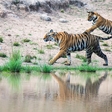
Global wildlife could plunge to a 67 per cent level of decline in just the fifty-year period ending this decade as a result of human activities, according to WWF's Living Planet Report 2016.
According to the report, global populations of fish, birds, mammals, amphibians and reptiles have already declined by 58 per cent between 1970 and 2012, the most recent year with available data. This places the world on a trajectory of a potential two-thirds decline within a span of the half- century ending in 2020. Fortunately, 2020 is also a year of great promise. In that same year, commitments made under the Paris climate deal will kick in, and the first environmental actions under the globe's new sustainable development plan are due. If implemented, these measures, along with meeting international biodiversity targets set for 2020, can help achieve the reforms needed in the world's food and energy systems to protect wildlife across the globe.
"Wildlife is disappearing within our lifetimes at an unprecedented rate," said Marco Lambertini, director General of WWF International. "This is not just about the wonderful species we all love; biodiversity forms the foundation of healthy forests, rivers and oceans. Take away species, and these ecosystems will collapse along with the clean air, water, food and climate services that they provide us. We have the tools to fix this problem and we need to start using them now if we are serious about preserving a living planet for our own survival and prosperity."
The WWF report uses the Living Planet Index, provided by the Zoological Society of London (ZSL), to monitor trends in wildlife abundance. This index reports how wildlife populations have changed in size, rather than the specific number of animals that have been lost or gained. "Human behaviour continues to drive the decline of wildlife populations globally, with particular impact in freshwater habitats. Importantly however, these are declines, they are not yet extinctions – and this should be a wake-up call to marshal efforts to promote the recovery of thesepopulations," said Professor Ken Norris, Director of Science at ZSL.
The top threats to species identified in the report are directly linked to human activities, including habitat loss, degradation and overexploitation of wildlife. At present, agriculture occupies about one-third of the Earth's total land area and accounts for almost 70 per cent of water use.
"No matter how you add it up, the math does not look good. The more we continue to exceed Earth's limits, the more damage we do to our own future," said Lambertini. "We are at a decisive moment in time when we can seize the solutions to steer our food, energy and finance systems in a more sustainable direction."








